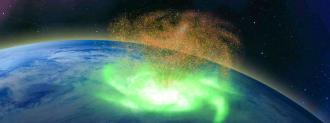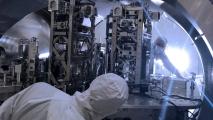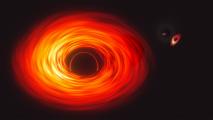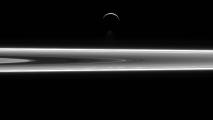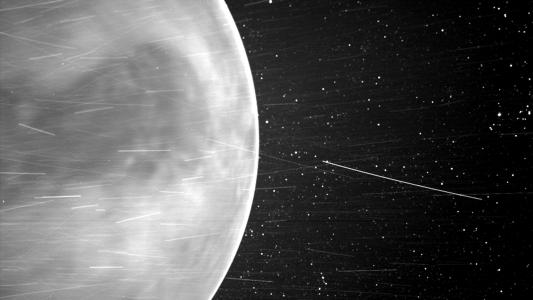Weather isn’t just something we experience on Earth — there’s weather in space, too.
This space weather is driven by the sun, which emits a steady stream of plasma, in what’s known as the solar wind. Sometimes, it also sends out massive quantities of this plasma or bursts of radiation.
Space weather isn’t dangerous to people on Earth’s surface — we have the atmosphere and magnetosphere to protect us — but it can cause electrical outages, harm astronauts, and disrupt spacecraft and airplanes.
Scientists are constantly studying space weather, trying to predict major storms so we can take defensive action — temporarily shutting down satellites, for example, or reconfiguring power grids.
Now, they’ve discovered a brand new extreme space phenomenon we’ll need to be on the lookout for: the space hurricane.
The Space Hurricane
A terrestrial hurricane consists of fast winds that swirl around a central eye, showering the surface in rain. A space hurricane is a swirling mass of plasma that rains electrons down on Earth from above.
In 2014, a space hurricane formed over the North Pole, but a team led by scientists from Shandong University only recently discovered the storm while looking through past satellite observations.
Until now, it was uncertain that space plasma hurricanes even existed.
Mike Lockwood
Using a combination of data from satellites, radar, and other instruments, they confirmed their discovery — and then built a 3D image of it.
Based on the available evidence, the space hurricane was more than 600 miles wide, and its altitude ranged from about 70 miles to more than 500. It consisted of several rotating arms of plasma and lasted for about eight hours.
“Until now, it was uncertain that space plasma hurricanes even existed, so to prove this with such a striking observation is incredible,” researcher Mike Lockwood said in a press release.
“Tropical storms are associated with huge amounts of energy,” he added, “and these space hurricanes must be created by unusually large and rapid transfer of solar wind energy and charged particles into the Earth’s upper atmosphere.”
Space Weather Report
The researchers have already found evidence of several more space hurricanes in the same data, and they don’t think they only happen above Earth.
“Plasma and magnetic fields in the atmosphere of planets exist throughout the universe, so the findings suggest space hurricanes should be a widespread phenomena,” Lockwood said.
Just like other extreme space weather events, a space hurricane could disrupt satellites and other technologies, and now that this group has confirmed what the storms look like, scientists can start working to predict them.
“I think there will be more teams from Europe, U.S., Canada, Japan, and China, etc., who will do more research on space hurricanes in the future,” lead researcher Qing-He Zhang told Vice.
We’d love to hear from you! If you have a comment about this article or if you have a tip for a future Freethink story, please email us at tips@freethink.com.
